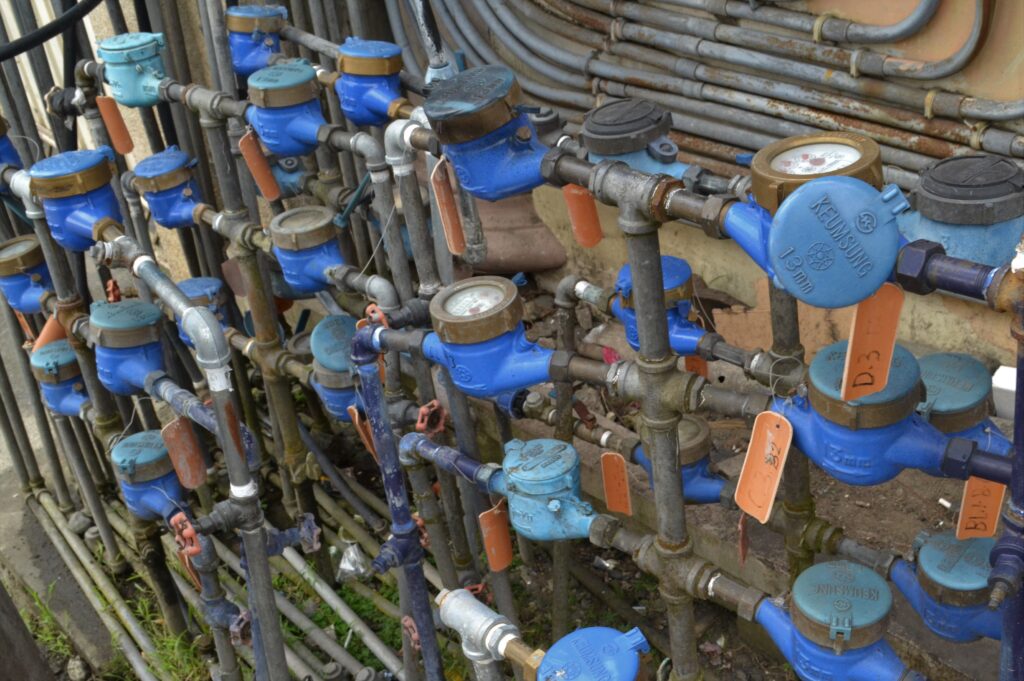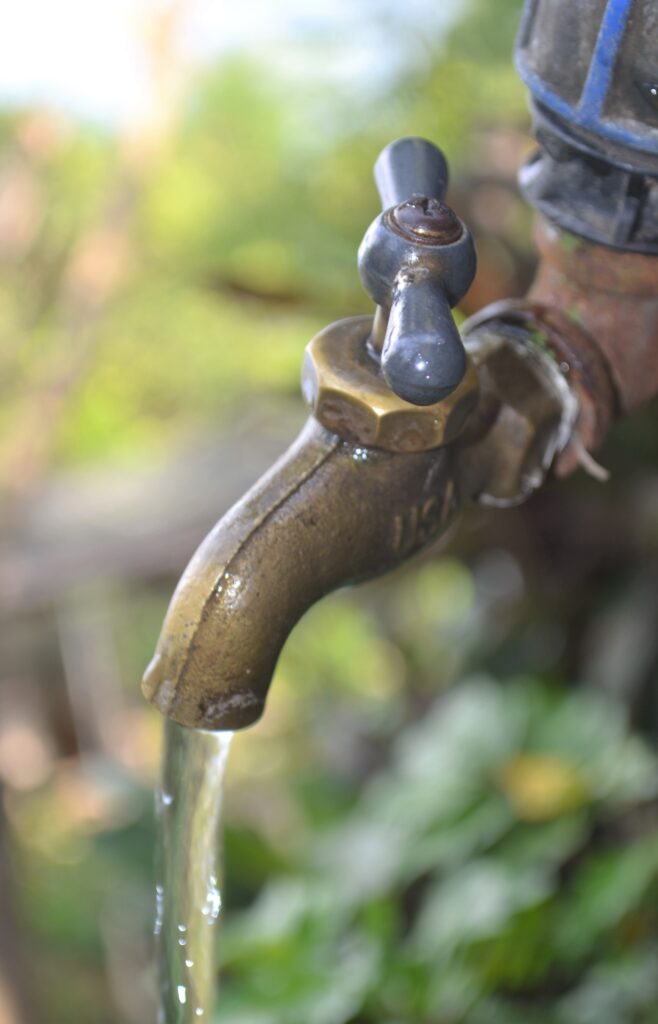WHEN THE WELLS RUN DRY
Text and Photos by Henrylito D. Tacio
(Second of Two Parts)
When the wells run dry (Second of Two Parts). While the country welcomed the coming of 2021, some people in barangay Butuan, about 15 kilometers away from the town of Jose Abad Santos in Davao Occidental, were undergoing health problems after drinking contaminated water.
“After I received the report, I immediately talked with our municipal health officer to send a team to the barangay,” Mayor Jason John Joyce posted in his Facebook account on January 3. “We also prepared dextrose and other medicines.”
Some of the victims, mostly children, were admitted in the district hospital and given oresol (oral rehydration solution) and some medicines. Oresol, according to the Mayo Clinic, is a formula used to replace electrolytes and fluids that are lost in the body.
Despite the immediate response of the government, there was one casualty. A 62-year-old man from sitio Malwayog was admitted in the hospital on December 30. He died of renal failure two days later.
“Water is life,” the old proverb insists. Not in the Philippines, as the recent event has shown. In urban areas, people are drinking polluted water. “Heavy inorganic pollutants have made water increasingly a threat to life” here, according to a report released by the Manila-based Asian Development Bank some years back.
The study done by Greenpeace Water Patrol Investigation backed up the claim. Five out of the 18 artesian wells in Benguet and Bulacan, for instance, were found to contain nitrate levels well above the drinking water safety limit issued by the World Health Organization (WHO).

“The nitrate pollution that we discovered in farming areas is particularly worrisome – communities think that the water they drink every day is clean because physically, it doesn’t smell bad or look bad. But it is actually laced with nitrate from fertilizers which people don’t normally associate with pollution,” Greenpeace said in a statement.
Drinking water with high levels of nitrate can cause serious health problems, particularly among children. The greatest risk of nitrate poisoning is “blue baby syndrome,” in which affected infants develop a peculiar blue-gray skin color. They may become irritable or lethargic, depending on the severity of their condition. The condition can progress rapidly to cause coma and death if it is not recognized and treated appropriately.
For years, city residents of Cebu have complained about having to drink water from unsafe sources. It seems the problem has grown even more urgent over the years. In 2011, a few people died while most were hospitalized when typhoid fever hit the town of Alegria. In response, the provincial government “distributed P50,000-worth of relief goods to 149 affected residents in barangay Valencia,” the local daily SunStar Cebu reported.
But even in the midst of numerous fever cases, town officials reportedly refused to blame water was the cause of the typhoid fever outbreak. They reasoned that some who were hospitalized for typhoid drank water from other sources.
“About 80% of all diseases and more than one-third of all deaths in developing countries are caused by contaminated water,” deplored Elizabeth Dowdeswell when she was still the executive director of the United Nations Environment Program.
“At any given time, an estimated one-half of people in developing countries are suffering from diseases caused either directly by infection through the consumption of contaminated water or food, or indirectly by disease-carrying organisms such as mosquitoes, that breed in water,” the United Nations said in a press statement. “These diseases include diarrhea, schistosomiasis, dengue fever, infection by intestinal worms, malaria, river blindness and trachoma.”
The UN press statement disclosed these startling facts and figures: “Every 8 seconds, a child dies from a water-related disease; 50% of people in developing countries suffer from one or more water-related diseases; 80% of diseases in developing world are caused by contaminated water; 50% of people on earth lack adequate sanitation; 20% of freshwater fish species have been pushed to the edge of extinction from contaminated water.”
The notion that water can carry disease first occurred to the earliest Greeks. The physician Hippocrates, the ancient innovator of medical ethics, advised that polluted water be boiled or filtered before being consumed.

“An estimated 50% of typhoid cases (in the Philippines) are due to water pollution, sanitation conditions and hygiene practices,” said a World Bank report. “Outbreaks are commonly associated with contaminated water supply systems.”
Typhoid fever and other water-related diseases are bound to stay in the Philippines, where water is becoming a scarce commodity. In 2000, Filipinos had to contend with only 6,332 cubic meters of “total actual renewable water” resources per capita. It dipped to 5,880 cubic meters five years later. It is still falling today.
It’s no wonder why in 24 provinces, one of every five people quaffs water from dubious sources, according to a government report. Among the identified provinces were Agusan del Sur, Apayao, Basilan, Benguet, Bukidnon, Camarines Norte, Guimaras, Ilocos Norte, Iloilo, Leyte, Maguindanao, Masbate, Misamis Occidental, Negros Oriental and Occidental, North Cotabato, Nueva Vizcaya, Palawan, Quezon, Sultan Kudarat, Sulu, Tawi-Tawi, and Zamboanga del Norte and Sur.
Today’s “crisis in water and sanitation is – above all – a crisis of the poor,” said the United Nations Development Program study, Beyond Scarcity: Power, Poverty and the Water Crisis.
In the Philippines, “poor” refers to those whose incomes fall below the threshold determined by the government. It also refers to those who cannot afford to provide in a sustained manner for their minimum basic needs for food, health, education, housing and other social amenities in life.
Water is one of those basic necessities in life. “It is a grave moral shortcoming if people cannot drink water without courting disease or death,” Worldwatch Institute’s Sandra Postel once penned.
The World Bank predicts that by 2025, two-thirds of the global population will run short of fresh drinking water.
It’s the children who suffer the most from water-borne diseases. A child dies from water-related diseases every 15 seconds. That’s a total of 6,000 children each day – an equivalent of 230 American school buses.
Annual infant deaths, from diarrhea alone, exceed the toll of Mindanao armed clashes. Children, particularly the malnourished ones, “are always at high risk of preventable WASH (water, sanitation, and hygiene) related diseases like diarrhea, dysentery and typhoid,” said an official of the United Nations Children’s Fund.
Installing a flush toilet in the home increases a newborn child’s chances of celebrating a first birthday by 59%. Unfortunately, 27 children out of every 1,000 kids never make it to their first birthday.
In industrialized countries like the United States and Japan, water-borne disease is a subject for history books. But in the Philippines and other developing countries, it involves hospital wards and morgues.
“All of these diseases are associated with our failure to provide clean water,” deplored Peter H. Gleick, director of the Pacific Institute for Studies in Development, Environment and Security. “I think it’s terribly bleak, especially because we know what needs to be done to prevent these deaths. We’re doing some of it, but the efforts that are being made are not aggressive enough.”
Some aggressiveness must be done now. “By the middle of this century, some 4 billion people could be facing water shortages,” said Don Hinrichsen, an award-winning American journalist and book author. That’s half of the world’s projected population.

Water shortage is real. “Unlike copper, oil, and most other commodities, fresh water is not just a resource that acquires value only when it is extracted and put to human use. Most fundamentally, fresh water is a life support,” pointed out Postel, director of the Massachusetts-based Global Water Policy Project, and Vickers, author of “Handbook of Water Use and Conservation: Homes, Landscapes, Businesses, Industries, Farms.”
It’s a precarious time indeed as the world faces a water crisis. During his time, historian Thomas Fuller declared: “We only learn the value of a glass of water when the well runs dry.”
It’s time to listen to the words of Fuller. “World demand for water doubles every 21 years, but the volume available is the same as it was in the Roman times,” said Sir Crispin Tickell, former British ambassador to the United Nations and one of the organizers of the 1992 Earth Summit in Rio de Janeiro, Brazil. “Something has got to give.”

